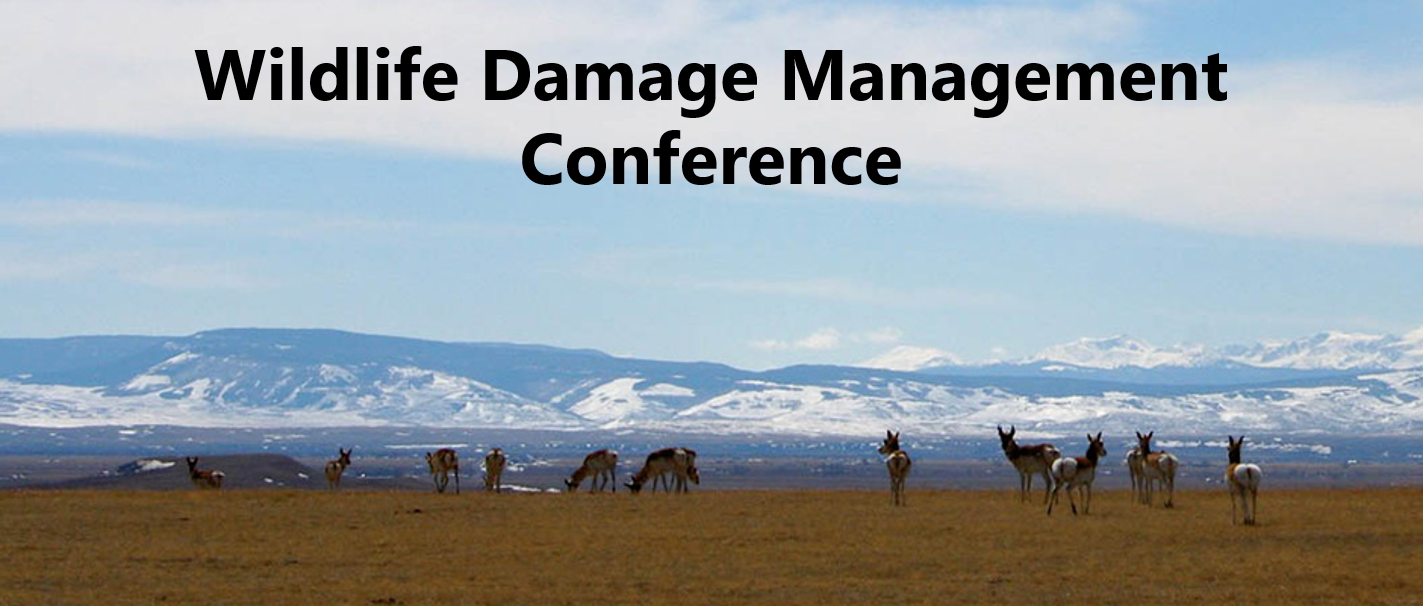Location
Orange Beach, AL
Start Date
27-2-2017 11:00 AM
Description
As wild pig removal programs continue throughout the United States, few programs have provided detailed information regarding landscape features, property ownership, and management activities that may impact trapping success. Whereas a greater amount of research is being conducted to understand the spatial ecology of wild pigs, there still exists a paucity of information with regards to wild pig movements which likely hampers removal efforts. Likewise, no studies have examined landscape characteristics that may impact local trapping success. Therefore, we examined the spatial distribution of trapping success of wild pigs on a 1,821 ha removal cooperative of three private landowners in central Alabama during 2014-2016. The study site consisted predominantly of forest land intermixed with small agricultural fields and wetlands along Bughall Creek, a large waterway system, in Macon county. In cooperation with USDA Wildlife Services removal operations, we recorded the date, trap location, and number of wild pigs captured at 13 trap sites distributed throughout the cooperative. Most traps consisted of three 4.8-m x 1.5-m horse panels with various steel or wooden trap doors baited with whole kernel corn and checked daily. All traps were active nearly continuously from about May-October, and opportunistically from November-April, each year. We captured at total of 757 wild pigs during 2014- 2016 with most of these captures (68%) occurring during the May-October trapping period. Whereas the number of wild pigs captured declined over three years (2014=359, 2015=232, 2016=166), significant numbers of wild pigs were still being removed in 2016. Trapping success (range=2-139 pigs captured/trap) varied spatially and temporally across the cooperative and among years with the constant influx of wild pigs likely due to movement along riparian corridors from source populations in adjacent properties. Trapping success was consistently greater for those traps located closer to water sources. Landscape features and sporting activities of adjacent landowners may significantly influence the movement of wild pigs onto a property and should be considered when assessing damage and subsequently developing removal programs. Future research should focus on understanding the spatial ecology of wild pigs within the context of removal operations.
Recommended Citation
Smith, Mark D.; Johnson, Dana K.; Gruver, Kenneth S.; and Boyd, Frank, "Examination of the Spatial Distribution of Trapping Success on a Wild Pig Removal Cooperative in Alabama" (2017). Wildlife Damage Management Conference. 3.
https://digitalcommons.usu.edu/wdmconference/2017/session2/3
Examination of the Spatial Distribution of Trapping Success on a Wild Pig Removal Cooperative in Alabama
Orange Beach, AL
As wild pig removal programs continue throughout the United States, few programs have provided detailed information regarding landscape features, property ownership, and management activities that may impact trapping success. Whereas a greater amount of research is being conducted to understand the spatial ecology of wild pigs, there still exists a paucity of information with regards to wild pig movements which likely hampers removal efforts. Likewise, no studies have examined landscape characteristics that may impact local trapping success. Therefore, we examined the spatial distribution of trapping success of wild pigs on a 1,821 ha removal cooperative of three private landowners in central Alabama during 2014-2016. The study site consisted predominantly of forest land intermixed with small agricultural fields and wetlands along Bughall Creek, a large waterway system, in Macon county. In cooperation with USDA Wildlife Services removal operations, we recorded the date, trap location, and number of wild pigs captured at 13 trap sites distributed throughout the cooperative. Most traps consisted of three 4.8-m x 1.5-m horse panels with various steel or wooden trap doors baited with whole kernel corn and checked daily. All traps were active nearly continuously from about May-October, and opportunistically from November-April, each year. We captured at total of 757 wild pigs during 2014- 2016 with most of these captures (68%) occurring during the May-October trapping period. Whereas the number of wild pigs captured declined over three years (2014=359, 2015=232, 2016=166), significant numbers of wild pigs were still being removed in 2016. Trapping success (range=2-139 pigs captured/trap) varied spatially and temporally across the cooperative and among years with the constant influx of wild pigs likely due to movement along riparian corridors from source populations in adjacent properties. Trapping success was consistently greater for those traps located closer to water sources. Landscape features and sporting activities of adjacent landowners may significantly influence the movement of wild pigs onto a property and should be considered when assessing damage and subsequently developing removal programs. Future research should focus on understanding the spatial ecology of wild pigs within the context of removal operations.


